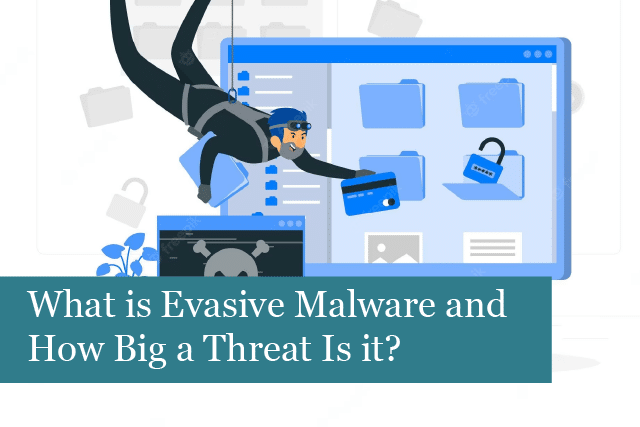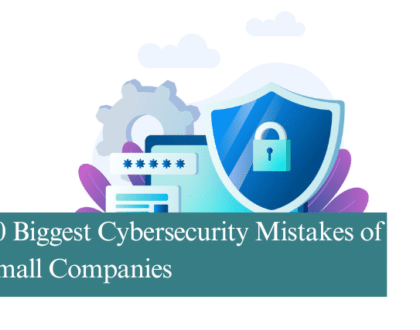
Have you heard of cyber threats that are undetectable? Unfortunately, there are bad actors who have learned how to integrate elusive methods into their malware, making it challenging for cybersecurity solutions to detect them. When you realise your network has been attacked, it’s too late. Your system has already been compromised.
Evasive malware is a major problem, and it’s important to understand how it works. With this knowledge, it’s possible to put the right cybersecurity solutions in place to keep your business safe.
In this article, we’ve included information about evasive malware, what it is, and the level of threat it poses. You’ll also find information on the tactics evasive malware uses and what you can do to prevent them from attacking your network.
What is Evasive Malware?
Evasive malware is a type of malware that can be detected by antivirus software, as well as EDRs (Endpoint Detection and Response solutions), XDRs (Extended Detection and Response solutions), and other security solutions. The evasive malware uses various tactics, including sandbox evasion, process injection, time-based evasion, Office macros, living-off-the-land, obfuscation, and others.
How Big a Threat is Evasive Malware?
It all depends on the malware’s main goal, such as whether it’s after data theft, sabotage, encryption, and more. The malware can take a few seconds or months to achieve its programmed function. No matter what its aim is, the evasive malware takes time to complete its mission. The longer the malware stays “under the radar,” the more chance it must fulfil its goals.
This is what makes evasive malware extremely damaging. The malware has enough time to complete its goals. It doesn’t matter whether your cybersecurity solutions are high-quality and can eliminate threats fast. The problem is that many security solutions are unable to detect evasive malware. The result is that your company will suffer an attack and any damage the malware may do.
Endpoint protection and Next Gen solutions usually focus on processes that are running. However, evasive malware works in a different way. Many evasive malware programs use OS-supported techniques for their attack. They work by “hollowing out” existing running processes and injecting their own code into the memory location. The result is that security solutions believe this is an authentic Microsoft app running, but in reality, it’s evasive malware.
The evasive malware uses document files such as Word, Excel, PDFs, and more that have the ability to execute. This makes the malware more insidious than traditional malware that’s easier to detect and eliminate.
Common Evasive Tactics Used by Malware
Malware programmers can install a variety of evasion tactics in their malware. Here’s an overview of some of the most common tactics evasive malware uses.
Sandbox Evasion
The most common tactic is sandbox evasion. A “sandbox” is an isolated holding area for unknown files that have been recently introduced into a system. The sandbox is a common cybersecurity solution. They keep unknown software isolated in the sandbox and analyse it for signs of malicious behaviour. If the software shows any signs of malicious behaviour, the cybersecurity solution considers it malware and takes the right actions to get rid of it and keep the network safe.
Sandboxes are usually pretty effective against regular malware. However, they’re not as effective against evasive malware that has sandbox evasion capabilities. The evasive malware may have the ability to scan its surroundings for signs of a sandbox. In that case, the malware may “hibernate” until the sandbox times out. It’s not possible for a file to stay permanently in the sandbox because other files must be placed in this area to be analysed. When the sandbox times out, the evasive malware can then come out of hibernation and perform its attack on the system.
Obfuscation
Another tactic used by evasive malware is called obfuscation. This is a tactic used to counter signature-based malware detection. In signature-based malware detection (used by traditional antivirus software), antimalware software compares the signature of an unknown file with known malware signatures, which are contained in its database. If the antimalware finds a signature match, the unknown file is considered to be malware.
Evasive malware that uses obfuscation can alter the contents of their file. This makes the file undetectable by signature-based antimalware solutions. When these solutions scan an obfuscated malicious file, they aren’t able to recognize the file is malware.
Tips for Countering Evasive Malware
There’s no question that evasive malware is challenging to detect; however, it is possible to stop them. Read on to learn some things you can do to keep them from attacking your network.
Exercise Proper Patch Management
Patch management may seem like a basic method; however, it’s still effective against malware infections, including evasive malware. When patching your system, it’s possible to prevent evasive malware from attacking and infiltrating the system through vulnerability exploits.
Vulnerability exploits may include a trojan sent through email, social engineering, phishing, or an exploited vulnerability on an unpatched system. This is why patching is still an effective method against traditional and evasive malware.
Use Cybersecurity Solutions Effective on Evasive Malware
Many cybersecurity solutions are not effective against evasive malware. However, there are always exceptions. For instance, Minerva Labs and Cyren are two solutions that can protect your network against an attack by evasive malware.
Hire an IT Support Service Provider with Cybersecurity Experience
Not all organisations have an in-house IT department to rely on when it comes to managing their network and cybersecurity solutions. Small businesses may find it too expensive to have a dedicated IT team.
For businesses without an in-house IT team, it’s best to hire an IT support provider that has cybersecurity experience. With the right provider, you can rest assured that they will choose the right cybersecurity solution to find and eliminate evasive malware.
Summing It Up
Evasive malware is a new method that cybercriminals are using to attack organisations and their networks. The malware is more insidious than more traditional types of malware. The reason is that evasive malware can “hide” in a cybersecurity’s sandbox and go undetected. The malware can hibernate in this location, until it must be moved to examine a new file. Once this happens, the malware can start working as it was designed to, wreaking havoc on your network.
The goal is to hire the right managed IT service provider. The right provider has knowledge and expertise in cybersecurity and the solutions that can keep your organisation safe from evasive malware and other cyber threats.
Recommended Posts

How to Get the Most Out of Your IT Budget
25th April 2025

10 Biggest Cybersecurity Mistakes of Small Companies
18th April 2025

The Importance of Planning in Business IT Solutions
11th April 2025
